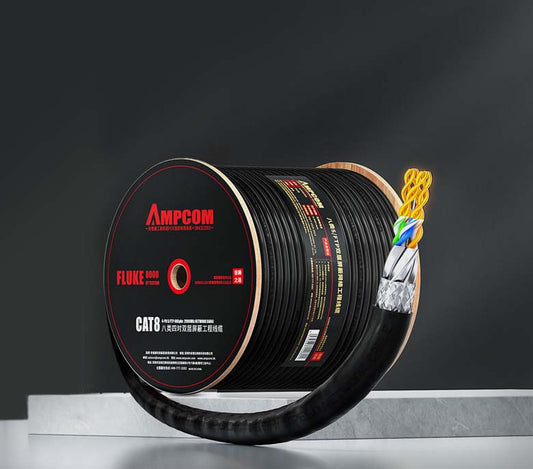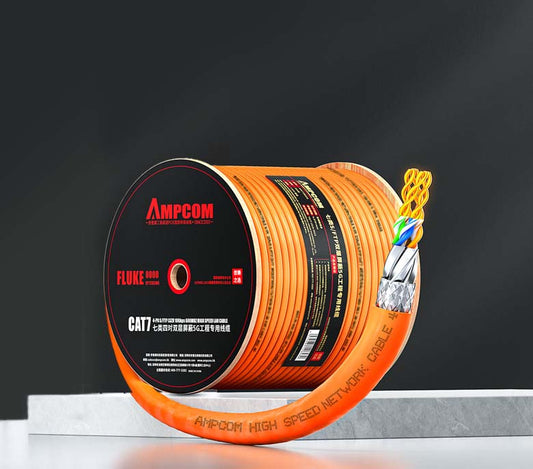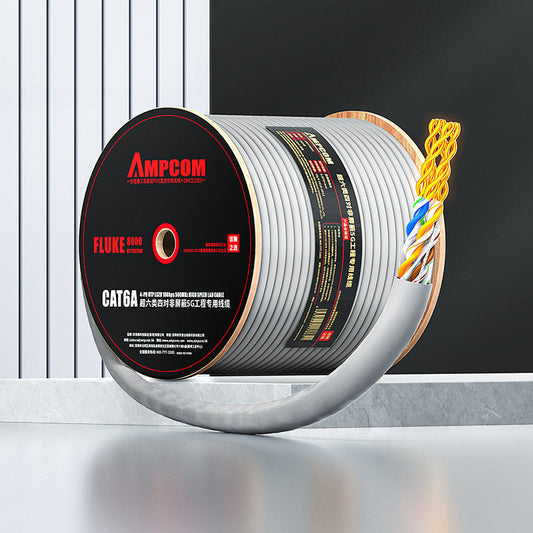LSZH vs Plenum vs PVC: Safety, Code & When to Specify Each
Introduction
In the world of network cabling, safety and compliance are paramount concerns, particularly when selecting cables for installation in buildings and data centers. Three commonly used types of cables are LSZH (Low Smoke Zero Halogen), Plenum-rated, and PVC (Polyvinyl Chloride). Each of these materials has unique properties, making them suitable for different environments based on safety standards, fire codes, and overall performance needs.
In this article, we'll explore the differences between these cable types, their uses, and when each should be specified to ensure safety, efficiency, and compliance with building codes.
1. Understanding the Basics: LSZH, Plenum, and PVC
- LSZH (Low Smoke Zero Halogen): LSZH cables are designed to minimize the release of toxic gases and smoke in the event of a fire. These cables are made from materials that do not contain halogens like chlorine, which are harmful when burned. LSZH cables are typically used in confined spaces like schools, hospitals, and airports where air quality during a fire is a major concern.
- Plenum-rated Cables (CMP): Plenum cables are designed for use in air handling spaces (plenum spaces), which are the areas above ceilings or below floors used for air circulation. These cables are constructed with a fire-resistant jacket and meet strict fire codes for plenum areas, such as those outlined by the NEC (National Electrical Code). Plenum cables are tested to ensure that they do not emit toxic smoke or flames when exposed to heat or fire.
- PVC (Polyvinyl Chloride) Cables (CM, CMR): PVC cables are commonly used for general-purpose cabling in dry environments. While PVC offers durability and affordability, it does not have the same fire-resistant properties as LSZH or Plenum-rated cables. PVC cables can release harmful gases when burned, making them unsuitable for use in certain areas where fire safety is critical.
2. Safety Concerns & Compliance
Fire Safety: The primary difference between these cable types is their fire safety rating. Plenum-rated cables are required for use in spaces with air circulation because of their stringent fire resistance. LSZH cables, while not necessarily as fire-resistant as plenum cables, provide a safer alternative when halogen-free materials are necessary. PVC cables, on the other hand, should be avoided in areas that require stringent fire safety standards due to their potential to release harmful fumes during a fire.
Code Compliance:
- Plenum-rated cables (CMP) are compliant with building codes for air handling spaces and must be used where fire resistance is crucial.
- LSZH cables are ideal for areas where halogen-free properties are a must, such as hospitals or public buildings where air quality and safety take precedence.
- PVC cables (CM, CMR) are commonly used in non-plenum environments but must meet less strict fire codes than plenum cables. They are generally acceptable for use in residential and commercial buildings in non-air handling spaces.
3. When to Use Each Type of Cable
- LSZH Cables: Use LSZH cables in public spaces like airports, hospitals, schools, and office buildings where air quality and fire safety are concerns. These cables are particularly suited for environments where the potential for a fire can lead to significant harm due to toxic smoke.
- Plenum-rated Cables: When installing cables in areas with air handling systems, such as ceiling spaces or under floors where the air circulates, plenum-rated cables are mandatory. These cables are the safest option for use in high-risk fire areas.
- PVC Cables: PVC cables are ideal for general-purpose use in areas where fire safety codes are less stringent, such as in residential buildings or commercial spaces that do not require plenum-rated cabling. They are cost-effective and offer a good balance between durability and performance in non-critical environments.
4. Key Considerations When Specifying Cables
- Environment: Consider the environment where the cable will be installed. For high-risk fire areas or air handling spaces, always choose plenum-rated cables. For areas where the release of toxic fumes is a concern, LSZH cables should be used.
- Building Codes: Always ensure that the cables you choose meet local and national building codes. For example, plenum-rated cables are required for installation in plenum spaces, and failure to comply with these regulations could result in costly fines or safety hazards.
- Cost vs. Safety: While LSZH and plenum cables are typically more expensive than PVC cables, the safety benefits they provide—particularly in terms of reducing toxic smoke and fire hazards—outweigh the initial cost difference. When working in public or critical infrastructure projects, always prioritize safety over cost.
Conclusion
Choosing the right type of cable for your network installation is essential for safety, performance, and compliance. LSZH, Plenum-rated, and PVC cables all have distinct advantages and applications. Understanding when and where to use each type of cable ensures that your installation meets both safety standards and functional requirements.
For more details on network cable safety and selecting the right type of cable for your projects, check out our other resources on cable length and performance, EMI/RFI solutions, and network jumpers.



